

At Heimtextil 2024, the trend table approached its task differently from previous years. Instead of presenting several different trend themes, the forum moved from trends being the driver to transformation being the driving force.
“The focus of Heimtextil’s 24/25 edition is addressing change at scale,” said this year’s forum chair Anja Bisgaard Gaede.
“We present different transformative textile innovations under the headline New Sensitivity.”
“New Sensitivity transforms broadly and deeply and invites us to consider what we bring into the world and how it can contribute to a balanced nexus.”
Gaede said this way of thinking aligns with fundamental policy and legislation changes initiated by the European Commission’s European Green Deal and Biden-Harris’s ‘Bold Goals for U.S. Biotechnology and Biomanufacturing’.
“The adoption of Artificial General Intelligence (AGI) is transforming current times.”
“AGI has the potential to bring innovative solutions and help tackle significant challenges, also in the textile industry.”
“However, AGI can generally have the opposite effect on our society. AGI needs the mindset of New Sensitivity that helps simplify complexity, expand creativity, and find unseen solutions to the world’s critical issues, also within the world of textiles.”
New Sensitivity
Gaede said that Heimtextil Trends 24/25 were about approaching the future of textiles with a New Sensitivity.
“Sensitivity often relates to touch, sensation, and spirituality, but it is also about showing consideration, empathy and respect.”
“In this context, sensitivity means considering the impact when making a decision or creating a product.”
“Understanding how natural ecosystems work and prioritising balance as the default are key to maintaining a sensitive way of working.”
Gaede added that another underlying aspect to understanding New Sensitivity is solidarity.
“This solidarity means considering our relationship with each other, technology, and nature as linked and functioning as a nexus.”
“The three areas – nature, technology, and people – are undergoing significant transformation, and each affects and reinforces the other, regardless of the direction of the change.”
“Having a perspective and understanding based on solidarity means realising that what we do with technology affects nature and people alike, and this dynamic also applies in reverse. We need a sensitive way of thinking about all three elements to ensure a positive transformation for all.”
Plant-based textiles
With this sensitive approach in mind, the trend forum drew on a colour palette that reflected the nature of the textiles in the process.
“A sensitive approach to colouring methods is expressed by a dynamic yet subtle colour palette created through natural pigments deriving from the earth, as traditional colouring processes are brought to the next level through innovative bioengineering technology,” Gaede said.
“In pursuit of creating colours that evoke emotions in our senses while at the same time respecting our values in protecting the environment, we see colour bacteria growing pigments generating hues with great richness and depth.”
“This New Sensitivity includes acceptance of natural colour flows, as colours may fade with time or morph into new colourways.”
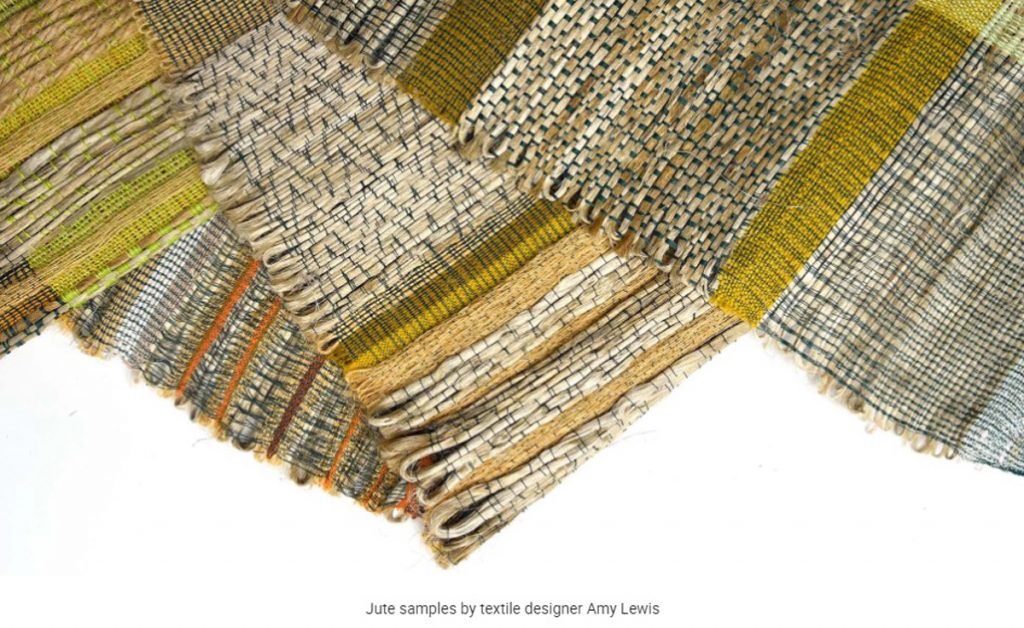
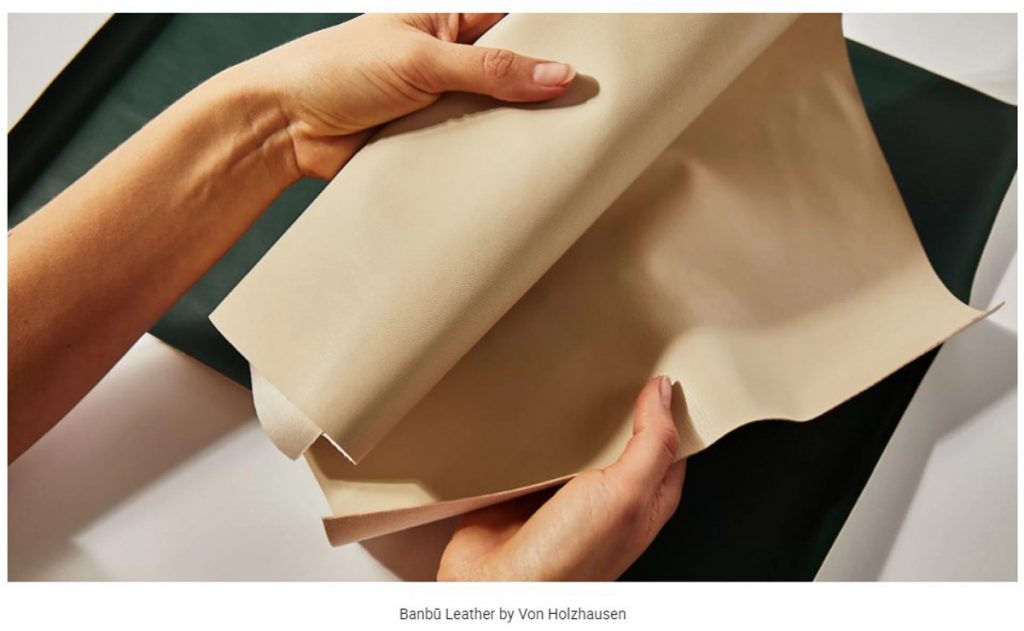
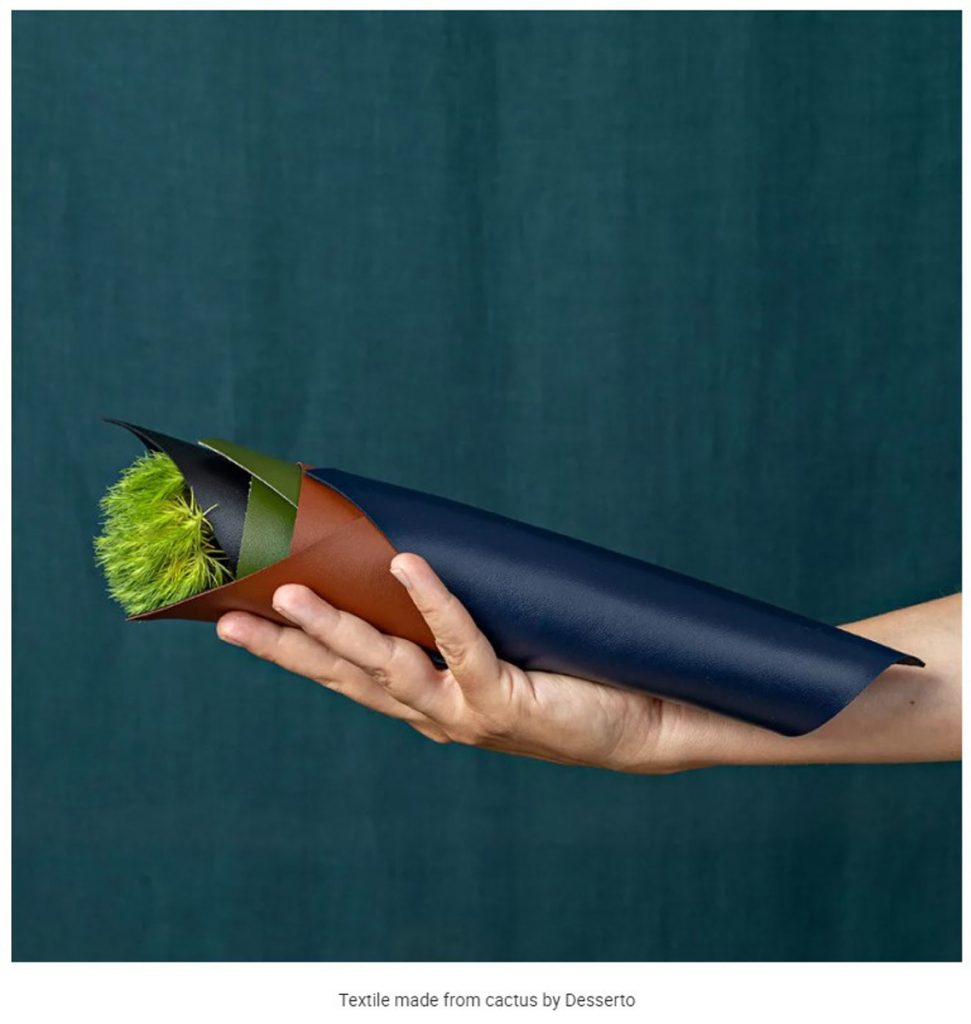
The colourways for Heimtextil Trends 24/25 were inspired by natural colours deriving from avocado seeds, algae, living bacteria, antique pigments such as raw sienna, and bio-engineered indigo and cochineal.
The high black component in most colours allows for widespread application and a greater variety of combinations. The punchy saturated accents enhance our senses as they lift our spirits.
“Plant-based textiles mean that the fibres are derived from something that grows rather than being synthetically produced.”
“The sustainable advantage of plant-based textiles is that their origin is natural and, therefore, more able to recirculate in existing ecosystems.”
“They can be divided into two groups. The first group of textiles are made from plant crops. New resilient crops like cactus, hemp, abaca, seaweed, and rubber offer new sustainable textile solutions.”
“Because of mechanical extraction, they can grow despite climate changes and require fewer chemicals in their development.”
“The second group consists of textiles made of plant by-products which are leftover raw materials from production such as banana, olive, persimmon and hemp,” Gaede said.
Technological textiles
Gaede said that technology can support the transformation of textiles through the use of different methods: upcycling and recycling of textiles, textile construction, and textile design.
“Due to decades of production, textiles are now a material we have in abundance. Developing technologies for recycling textile waste and methods for upcycling textiles increases the circular usage of existing textiles and thus reduces the need for virgin production.”
“Furthermore, old textile construction techniques also offer pathways to sustainable solutions.”
“For instance, using knitting technology instead of weaving for furniture upholstery produces less fabric waste; alternatively, weaving technique allows the creation of several colours using only a few coloured yarns.”
“Textile Design Thinking is another method that addresses critical issues such as energy usage and durability of natural fibres and enhances these through technological textile advancement.”
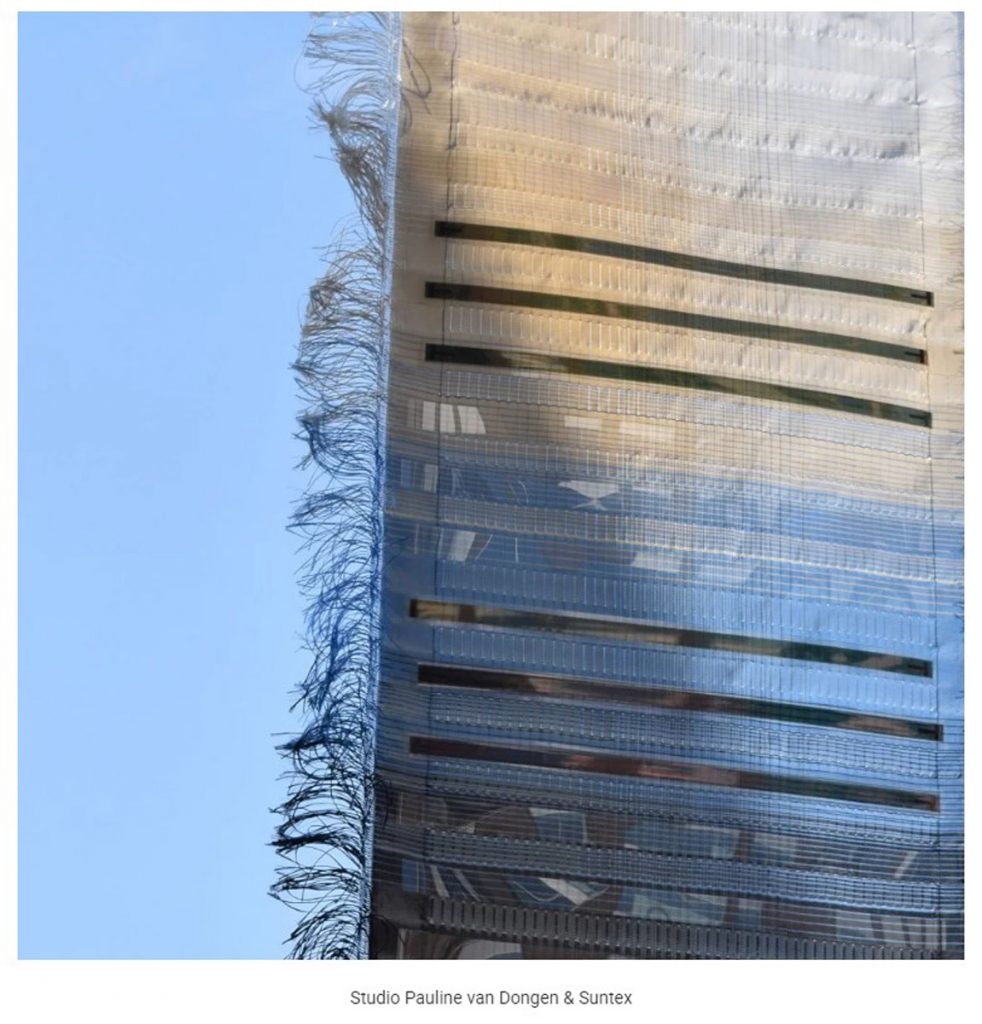
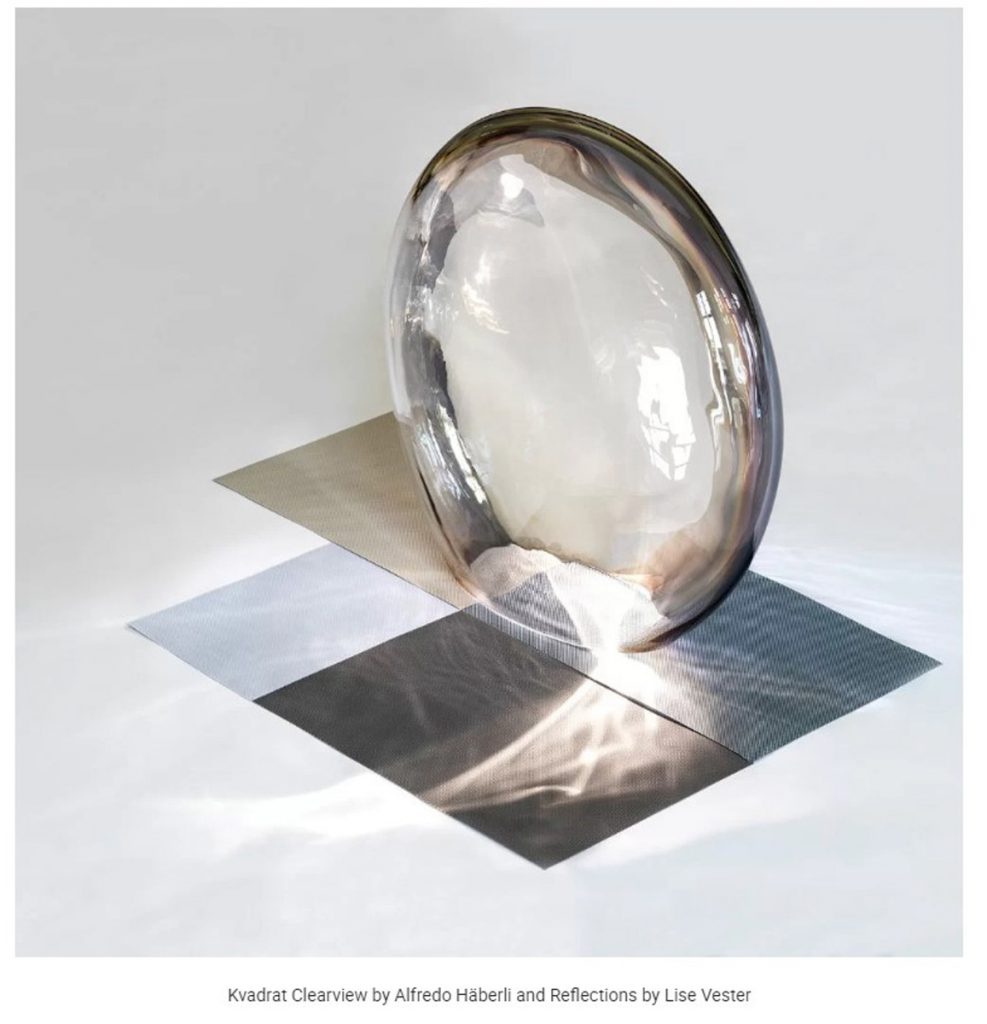
Bio-engineered textiles
To a certain degree, bio-engineered textiles represent a fusion of plant-based and technological textiles.
“Bio-engineering bridges nature and technology and transforms the way textiles are made,” Gaede said.
“They can be divided into two directions: fully bio-engineered and biodegradable textiles. In the production of fully bio-engineered textiles nature-inspired strategies are adopted.”
“Instead of growing plants and extracting their fibres, textiles are made from the protein, carbohydrates, or bacteria in corn, grass, and cane sugar.”
“Manufacturing involves a bio-molecular process that creates filaments which are made into yarn.”
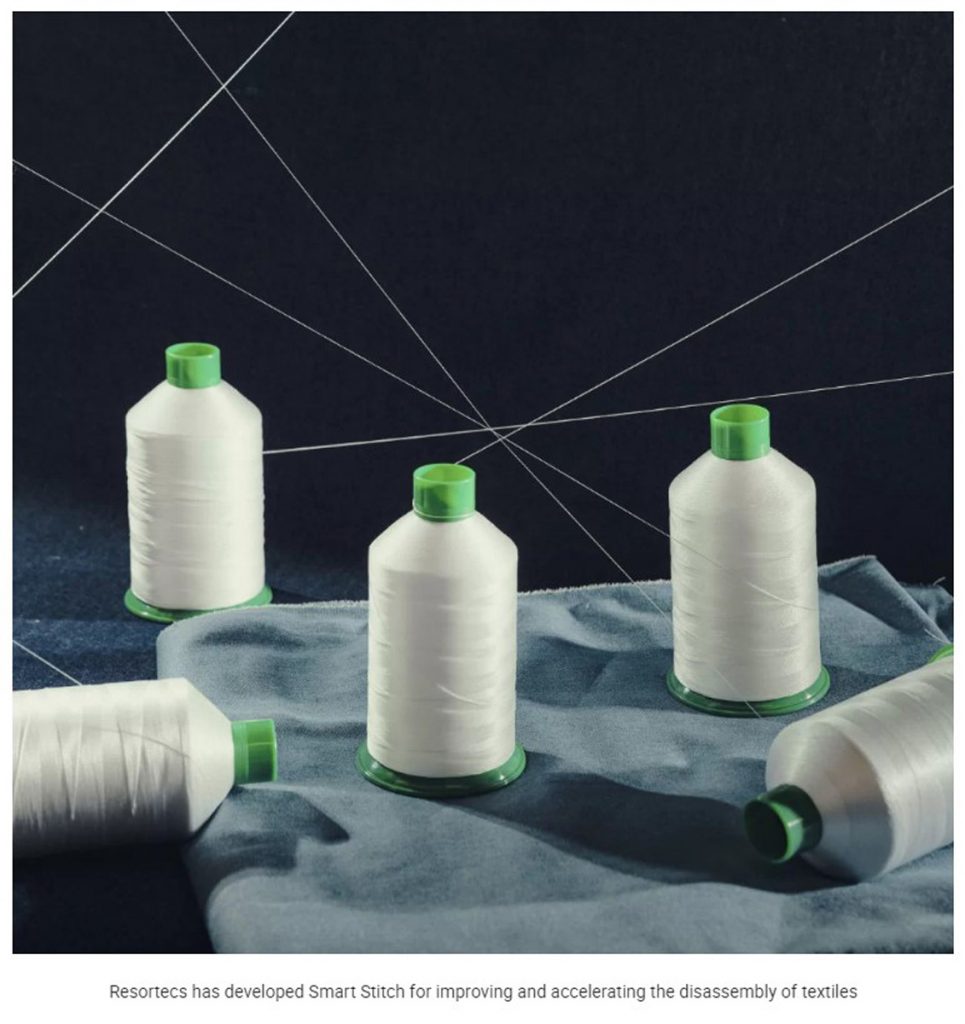
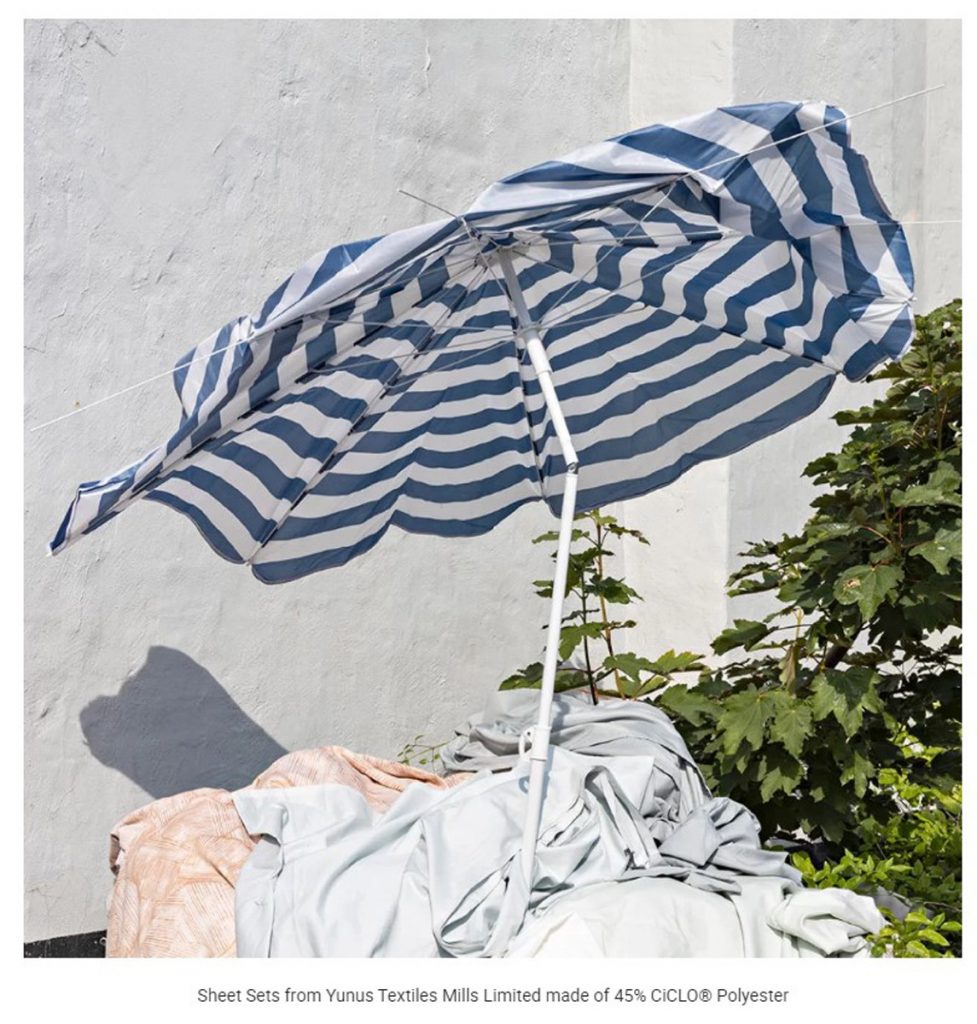
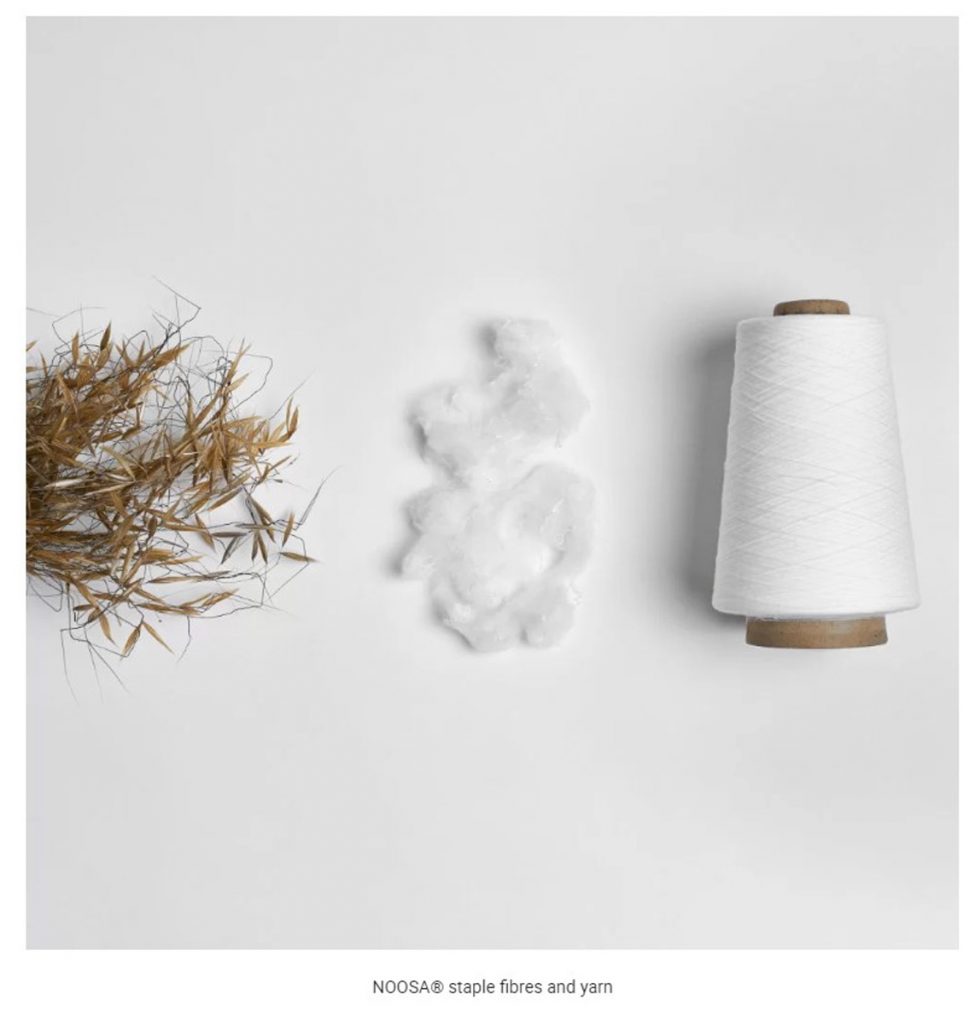
“The sustainable advantage of bio-engineered textiles is that they can have some of the same functionalities as synthetically produced textiles, while still being biodegradable because of their natural origin.”
Gaede added that biodegradable fibres can be added to conventional textiles like polyester to enhance the conventional textiles’ ability to revert to materials found in nature and hence biodegrade in natural environments such as water or soil. Although not biodegrading completely, these bio-enhanced textiles will biodegrade up to 93% compared to conventional textiles.
Local Industry outlines product trends for 2024
With interior design trends ever-changing and evolving, 2024 promises to be an exciting year for Australian homes as the new year signifies an opportunity to renew, to update and to consider not only how a space can look but also how it can feel.
“Interior design continues to have a significant impact on our daily lives with our surroundings greatly affecting our mood, stress levels and overall health,” says Vera Meharg, Group Marketing Executive, Luxaflex Window Fashions.
“People are prioritising sustainability and wellness through eco-conscious choices and a connection to natural and authentic materials, while smart technology continues to bring innovation and convenience to our homes.”
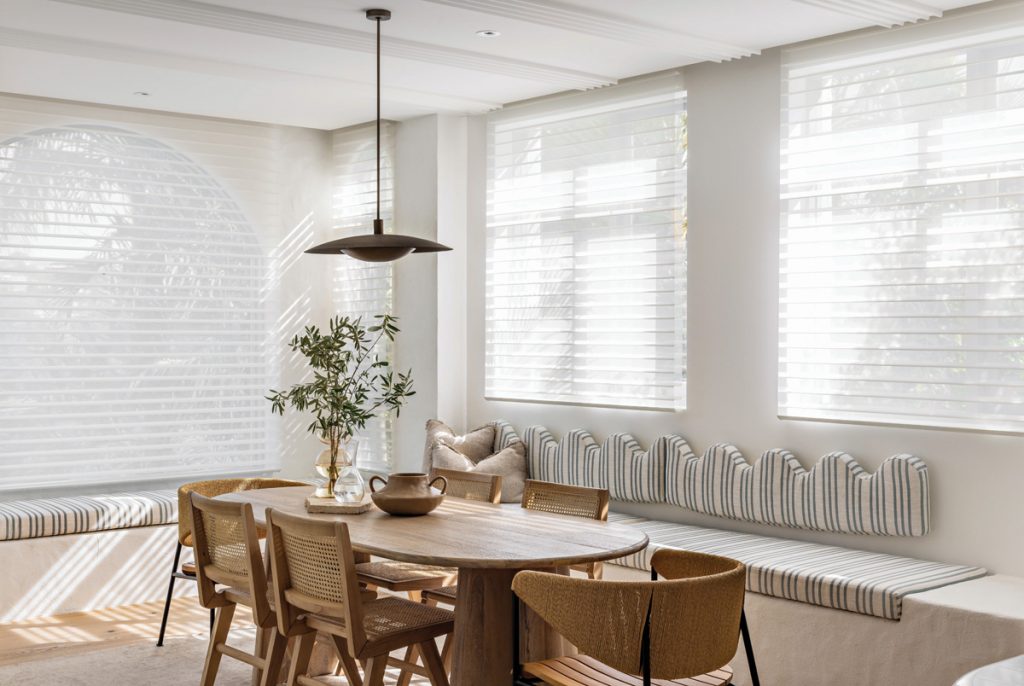
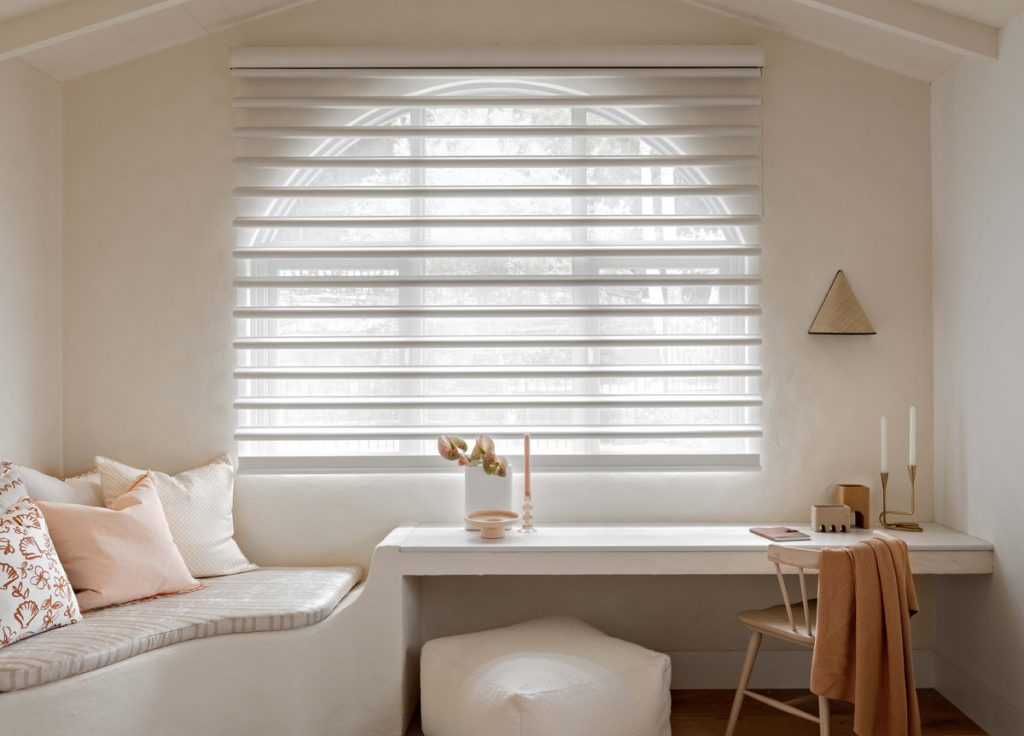
While some steadfast trends are here to stay there has been an evolution in the way they are being executed. Deeper hues are being favoured to work alongside Australia’s well-loved neutral colour schemes, adding warmth and nourishment for the mind, body and soul.
“Homeowners are looking to create comfortable and adaptable environments while being more creative with the use of texture and colour,” Meharg says.
Maximising natural light in the home has enormous health benefits, which makes window treatments an important consideration for interiors in 2024.
“Window treatments can have a transformative effect on our living spaces and not only work to enhance the aesthetics but also serve practical purposes like privacy and light control, while keeping your home comfortable and efficient,” says Meharg.
Meharg says the fundamentals of minimalism will always be popular in Australian homes, but this year we’ll see the trend emerge through warmer tones and fluid shapes to help establish a more soothing environment. Creamy whites and oatmeal alongside tawny browns and soft sage greens work to promote a level of softness and harmony.
“Warmer neutrals help to maintain a soft and comforting ambience, which people are craving in their homes,” says Meharg. Complementing the feel of ‘warm minimalism’ is the use of curves and organic shapes. “From rounded furnishings and lighting to arched doorways and recesses, smooth, rounded edges work to create a feeling of softness.”
As the trend for sustainable living evolves, people are increasingly looking to incorporate more environmentally friendly choices into their homes. Living sustainably doesn’t have to involve making a huge financial investment or embarking on large interior design changes, even small improvements can make a difference.
“For their eco-friendly properties as well as aesthetic appeal, natural materials such as bamboo and reclaimed wood are increasingly popular as well as the use of plant-based textiles and upcycling and recycling existing products,” says Meharg.
There has been a significant departure from the days when a home office meant a laptop on the kitchen benchtop or a desk in the corner of a room, the home office is sticking around and becoming a permanent fixture in 2024.
“Functional home offices require appropriate light, soundproofing, storage, power and potentially enough space for more than one person to work,” says Meharg.
“Natural light and the right window treatments will help to maximise the space for productivity.” Sheer fabrics are a great solution and Luxaflex Pirouette Shadings, which feature softly curved horizontal fabric vanes that are linked to a sheer backdrop, can be easily tilted to make the most of the natural light.
Creating intimacy, mood and drama, this trend emphasises an enduring monochromatic colour palette layered with softer, neutral tones to create a striking and visually dynamic environment. Selecting to use monochromatic accents, rather than being the dominant scheme, helps to convey a more relaxed ambience as the bolder hues are softened, and can be complemented with materials such as wide ribbings, bronze and steel finishes, woods and leather.
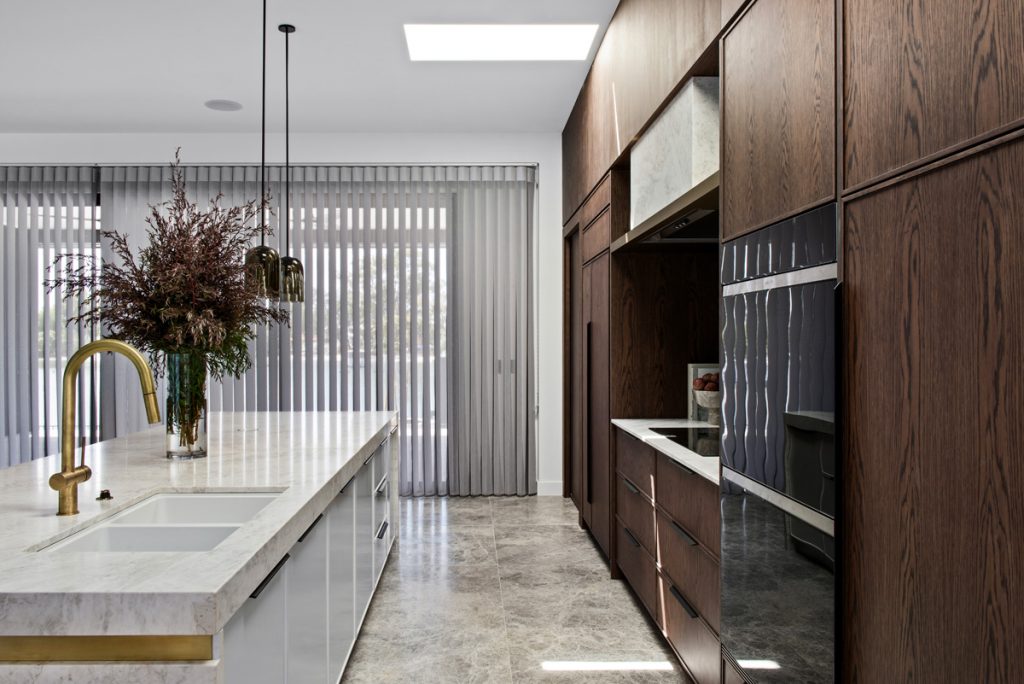
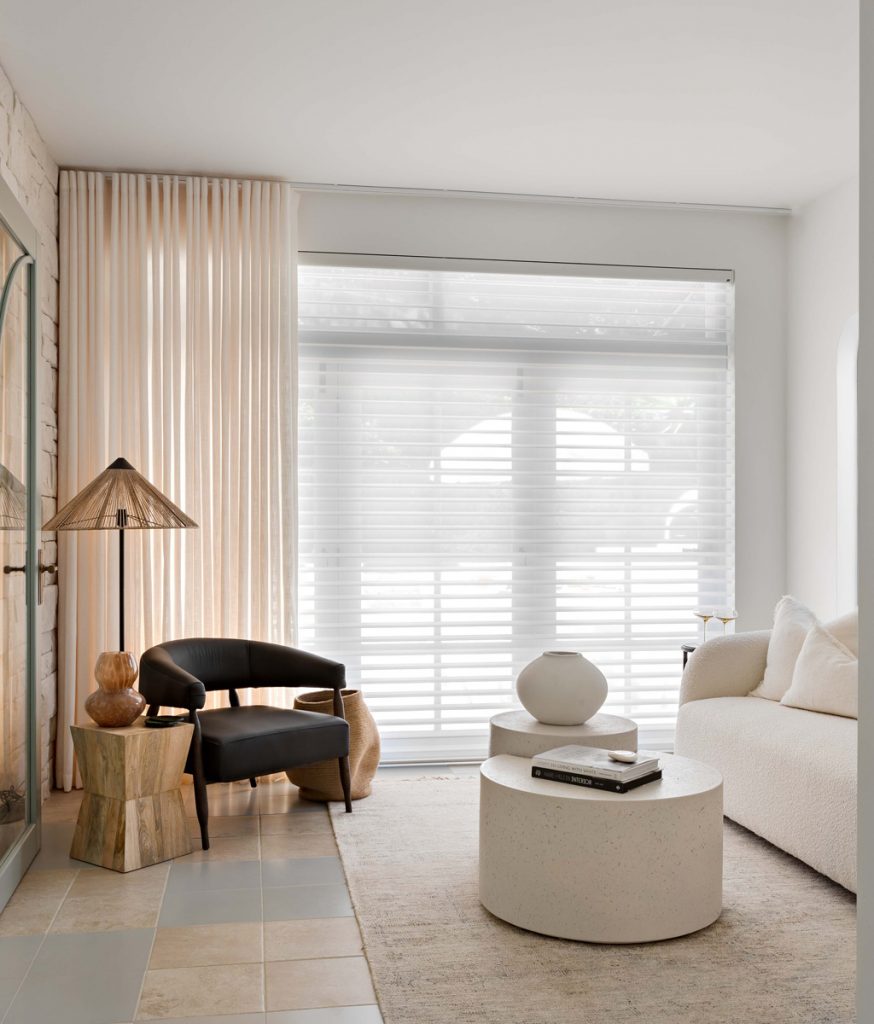
“While sophistication is still desired, 2024 interiors are very much geared towards wellness and as such people are adopting a more relaxed approach,” says Meharg.
Combining functionality and elegance, Luxaflex LumiShade Window Coverings in a subtle Provincial Linen fabric in the Ashen shade can work to soften more dominant tones to result in a space that feels intentional.
“Combining the versatility of a vertical blind with the elegant appeal of a soft window furnishing, the style offers beautiful light control and the sleek simplicity of its design helps to harmonise strong interior design elements such as bold black furnishings, trims and accents.”
“Warmer neutrals help to maintain a soft and comforting ambience, which people are craving in their homes,” says Meharg.
Complementing the feel of ‘warm minimalism’ is the use of curves and organic shapes. “From rounded furnishings and lighting to arched doorways and recesses, smooth, rounded edges work to create a feeling of softness.”
For window coverings, a beautifully soft and flowing curtain from the Luxaflex Sheer Curtain range supports the trend, with its curvilinear form and natural flow. Through a range of complementary tones, the design adds textural depth and can transform the ambience of a room. Pair with Luxaflex Duette Shades to assist with energy efficiency and help achieve the perfect balance of view as well as day and night time privacy and light control.
Embracing Nature with Blinds by Peter Meyer
Simon Meyer, Managing Director of Blinds by Peter Meyer, says that as we step into 2024, the world of interior design is witnessing a shift towards embracing nature, warm neutrals, customisation, metallic accents, and bold patterns in window furnishings.
“In 2024, the trend of incorporating natural and organic textures into interior spaces continues to gain momentum.”
“Blinds by Peter Meyer addresses this demand with Urban Weave, Le Blinde French Woven Timbers, Chinois Eclectics, and Silk Road.”
“Urban Weave stands out as a top choice for designers and end customers alike, offering nine stunning weaves in Romans, Rollers, and moving Panels. Providing 90% UV blockage and good heat retention, Urban Weave Woven Blinds combines functionality with a natural aesthetic.”
“Le Blinde French Woven Timbers, with 12 varieties that can be left in its raw state or custom painted or stained, has been a staple since the 80s, experiencing a resurgence in popularity.”
“Chinois and Silk Road offer handmade oriental bamboo weaves and rustic oriental woven grasses, reeds, and twines, respectively, contributing to the organic and natural texture trend.”
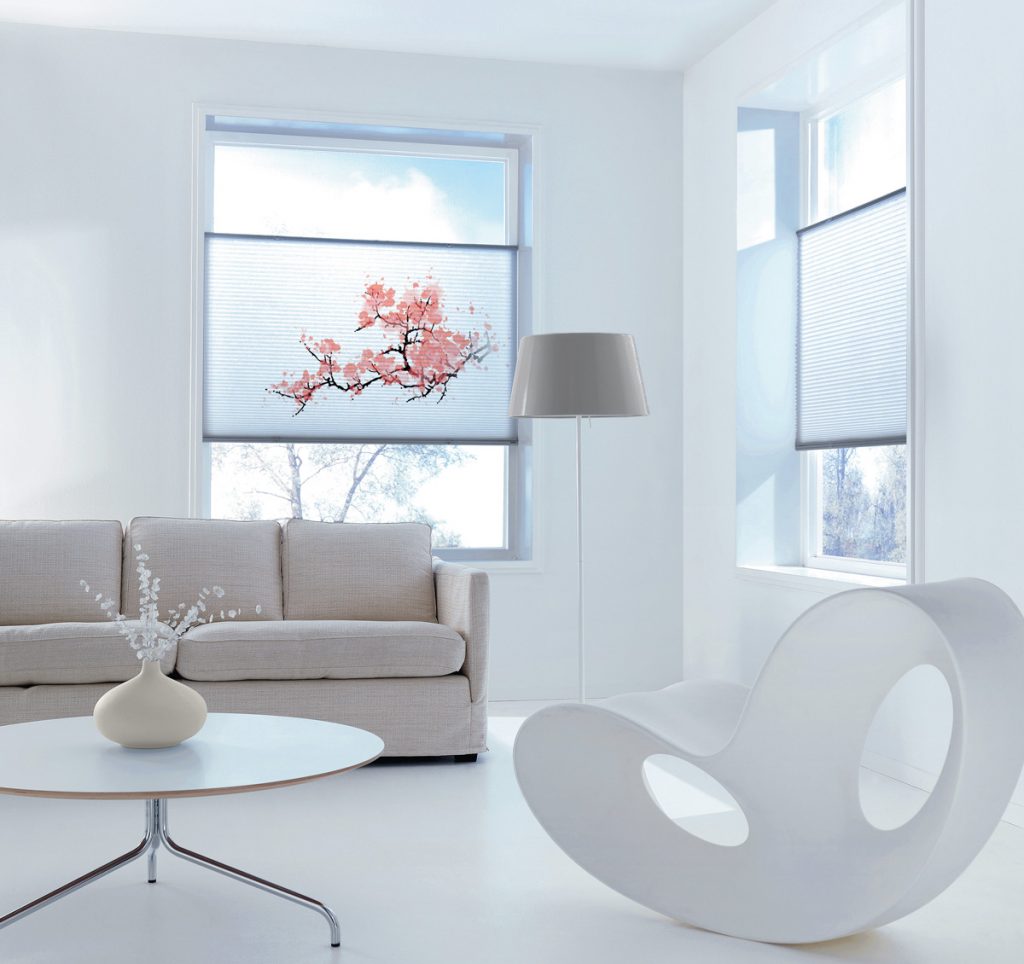
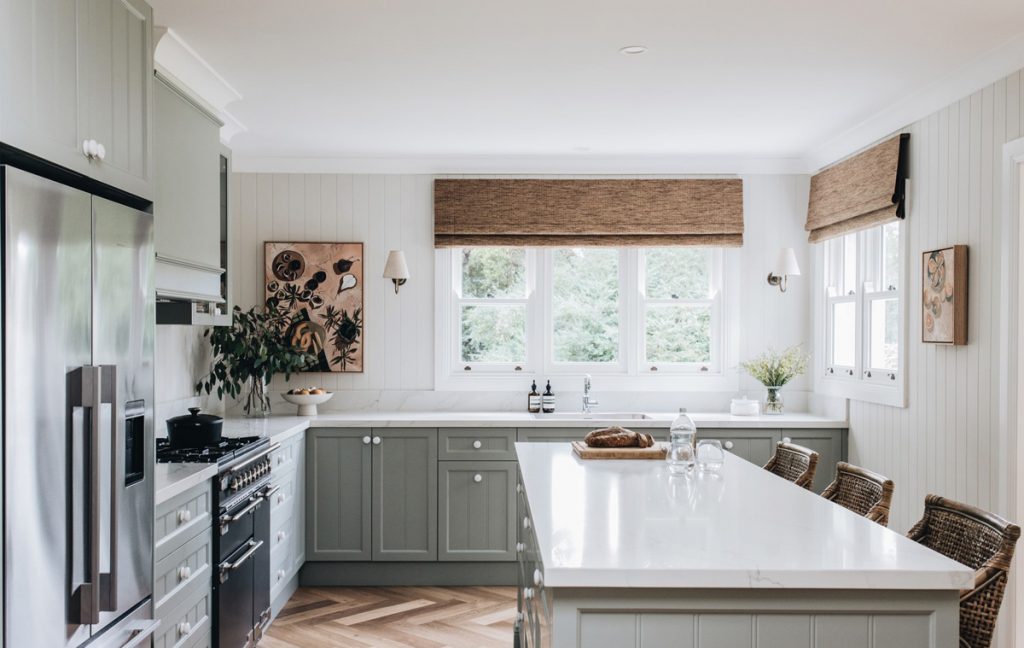
Meyer says that 2024 will see a shift towards warmer tones, with taupe, cream, and nutmeg brown taking centre stage.
“Blinds by Peter Meyer caters to this trend, offering a variety of warm neutral colour options in both our Basics V2.0 and Signature V3.0 fabric collections.”
“For example, Jardine from the Signature Collection is a beautiful fabric available in stunning warm hues.”
“The Habitus Poly Venetian Collection by Blinds by Peter Meyer has also undergone a recent transformation, now featuring breathtaking Timber tones that harmonise effortlessly with this prevailing aesthetic.”
Ideal for enhancing a variety of residential and commercial decor styles, these inviting warm tones infuse rooms with depth and charm, creating a snug and welcoming atmosphere.
Meyer says that the desire for uniqueness and individuality in home decor has led to a surge in demand for personalised window treatments.
“Blinds by Peter Meyer recognises this trend by providing extensive customisation options for curtain tracks, blinds, and outdoor awnings. Blinds by Peter Meyer’s expertise in custom painting takes customisation and personalisation to new heights. With colour matching to any paint available, clients can tailor their window treatments to match their unique style.”
For those who crave a touch of glamour, metallic accents in window treatments emerge as an exciting trend for 2024. Blinds by Peter Meyer’s Silk Road Blind in Sapora, adorned with a Copper accent, seamlessly marries the appeal of natural textures with the allure of metallic accents.
Another key trend in 2024, amidst the dominance of natural hues, are bold patterns and prints which are emerging as key players in window treatment trends. Geometric designs, oversized florals, and abstract prints inject a touch of drama and personality into living spaces.
Jacquards to stand out
George Lucas, Category Manager at Uniline says that there is an ongoing market trend for more textured fabrics, namely jacquards, in subtle tonal colourways without too much contrast.
“We have several jacquard fabrics currently in our range with more in development and have recently released our newest fabric, Hampton. This exquisite design creates a serene atmosphere and comes in eight sophisticated and understated colours in both blockout and coordinating sheer variants,” Lucas says.
“Hampton is characterized by its textural organic look. Its yarn dyed woven construction creates a visually appealing two-toned effect that seamlessly transitions with the subtlest of movements. The result is a fabric that adds depth to any space, enhancing its overall aesthetic appeal.”
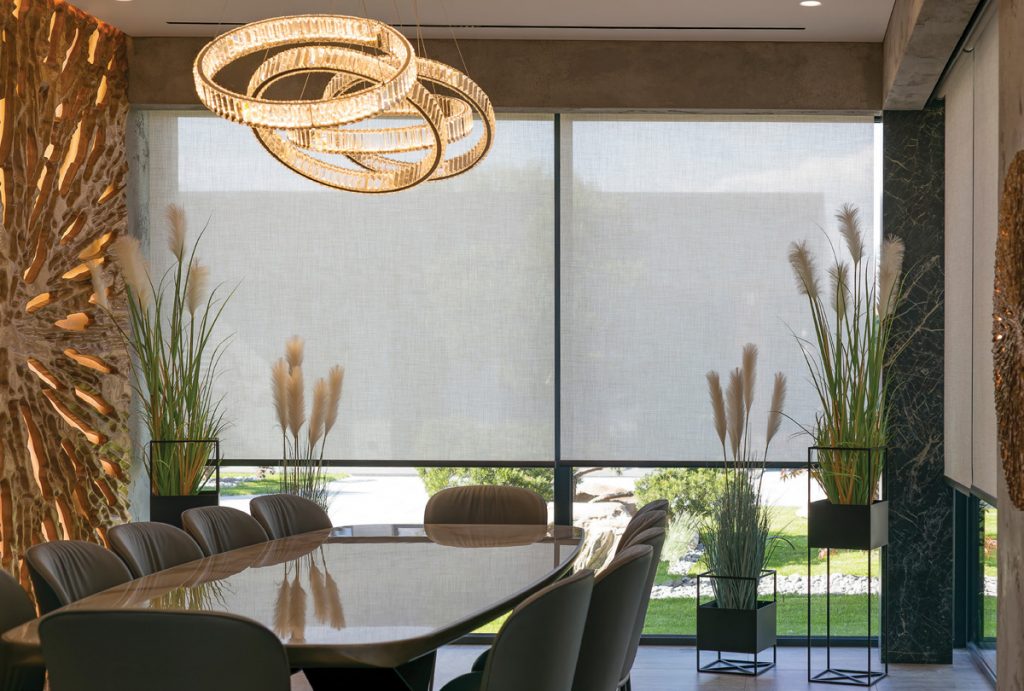
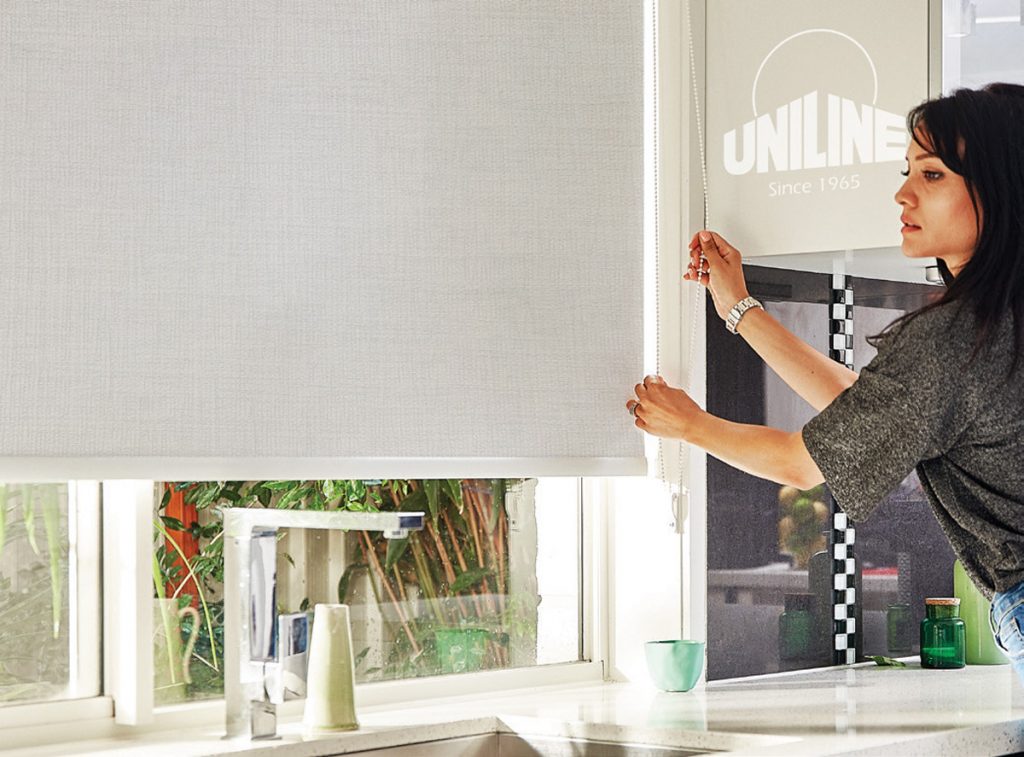
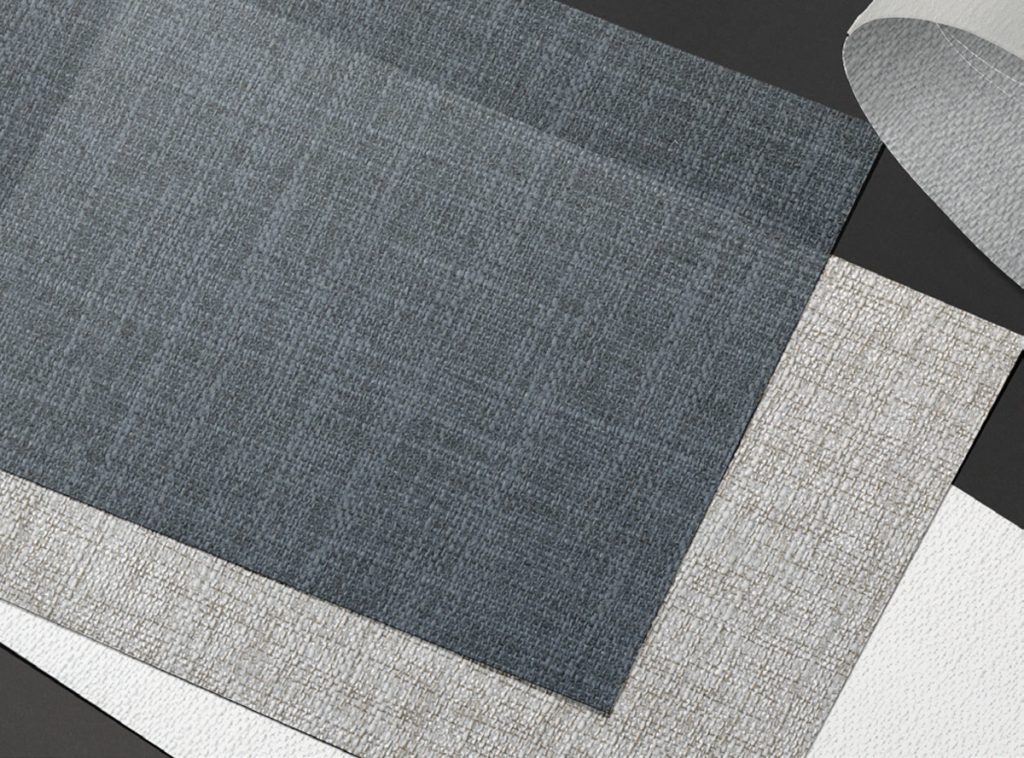
With its gentle soft texture, Lucas says Hampton is an exceptional choice for creating an atmosphere of tranquility.
“Hampton emanates a sense of luxury and sophistication which elevates the ambiance of any room.”
“To cater to various blind types, our blockout is available in a range of widths, including 300cm, 89mm, 100mm, and 127mm, providing flexibility and ease of use. Additionally, the coordinating sheer is also available in a 300cm width, ensuring seamless coordination with blockout roller options.”
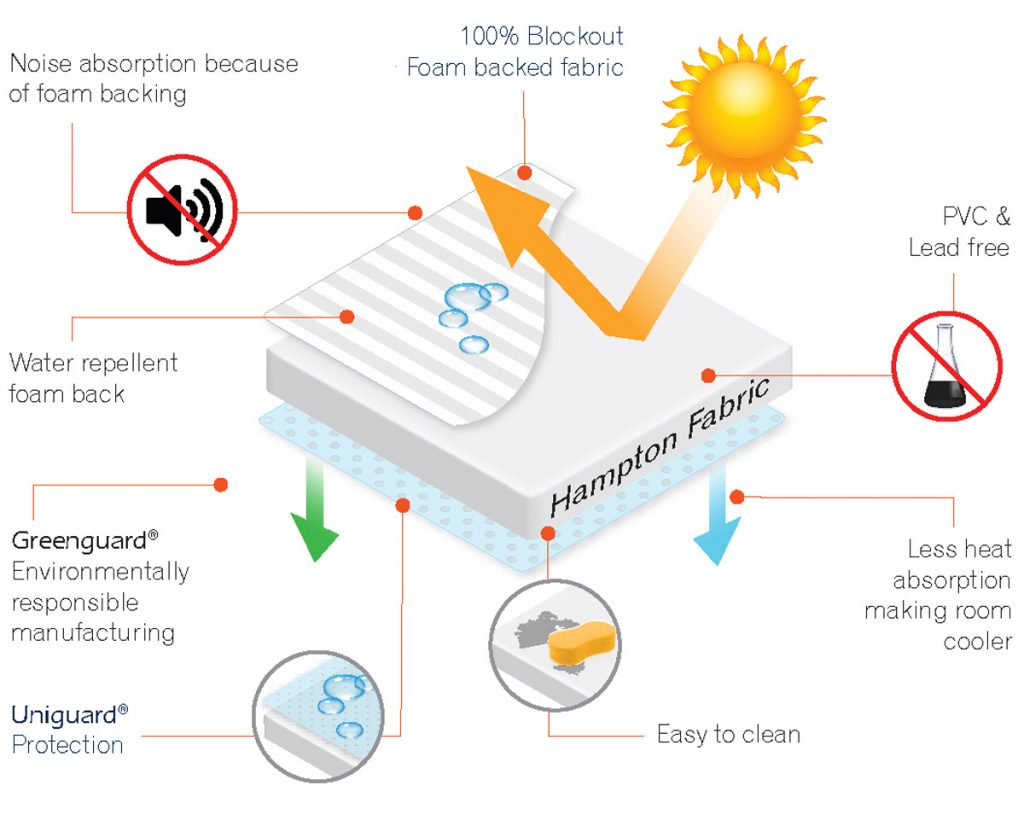
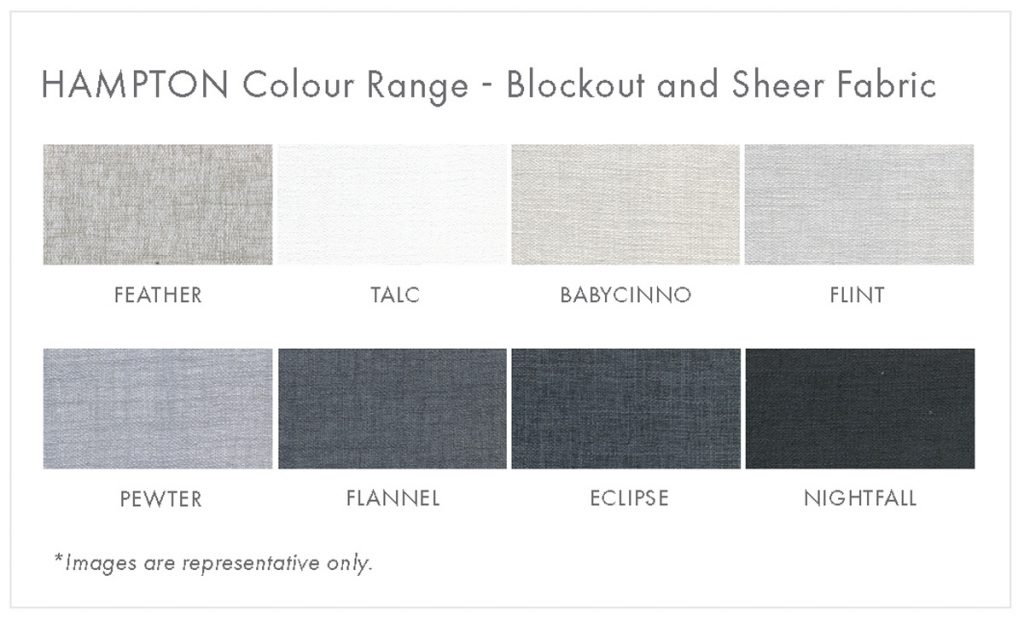
Lucas says Uniline takes great pride in producing high-quality fabrics that surpass industry standards, and Hampton is no exception.
“With its stunning colour choices, captivating design, and versatility, Hampton is set to become a highly sought after fabric in the world of interior design.”
Textures, Shapes and Layers feature at Norman
Giorgia English, Marketing Coordinator at Norman says that the rise of conscious design is leading to the introduction of natural materials and sustainable products.
“With the rise of conscious design, homeowners are turning to natural, sustainable window covering materials, providing numerous advantages such as fewer toxins, enhanced insulation, and reduced carbon footprints.”
“Norman have an assortment of timber shutters, venetian blinds and fabric shades crafted from materials like paper, linen, and jute.”
“These choices not only elevate the visual appeal of your customers’ homes but also instill a sense of satisfaction for opting for an eco-conscious solution.”
From an aesthetic point of view, textures, shapes and layers will drive trends for Norman in 2024.
“Say goodbye to the era of plain, one-dimensional fabrics for blinds and shades,” Giorgia says.
“Embrace the rich textures of Norman’s Breeze and Windsong woven Honeycomb collections, as well as the natural fabrics of Soluna Roller Shades, to create a tactile experience and visual interest that elevates the interior of any home.”
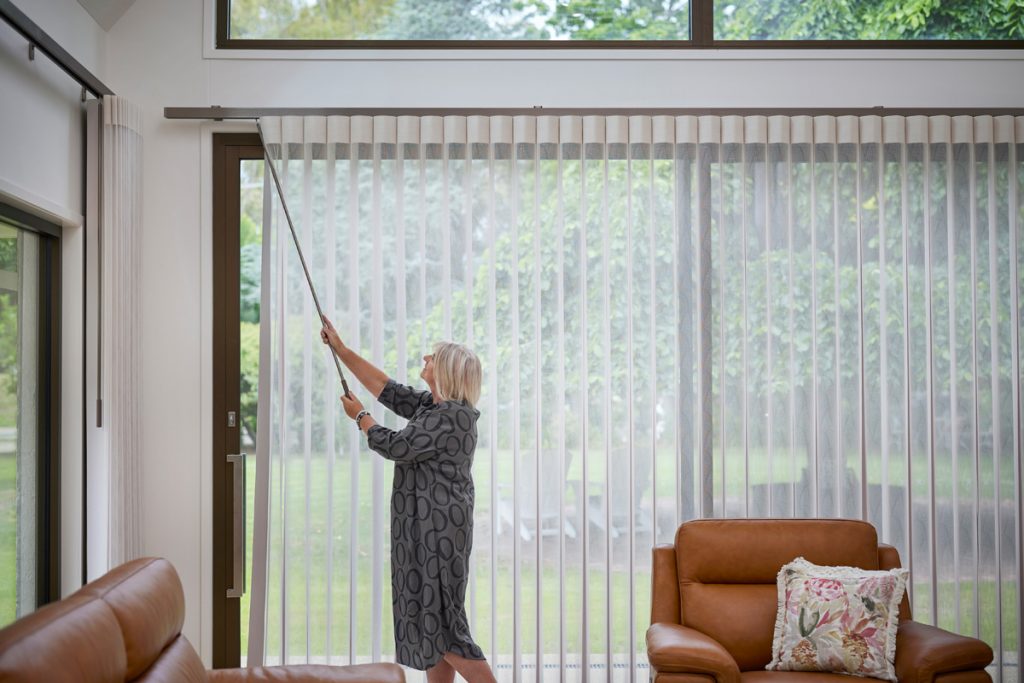
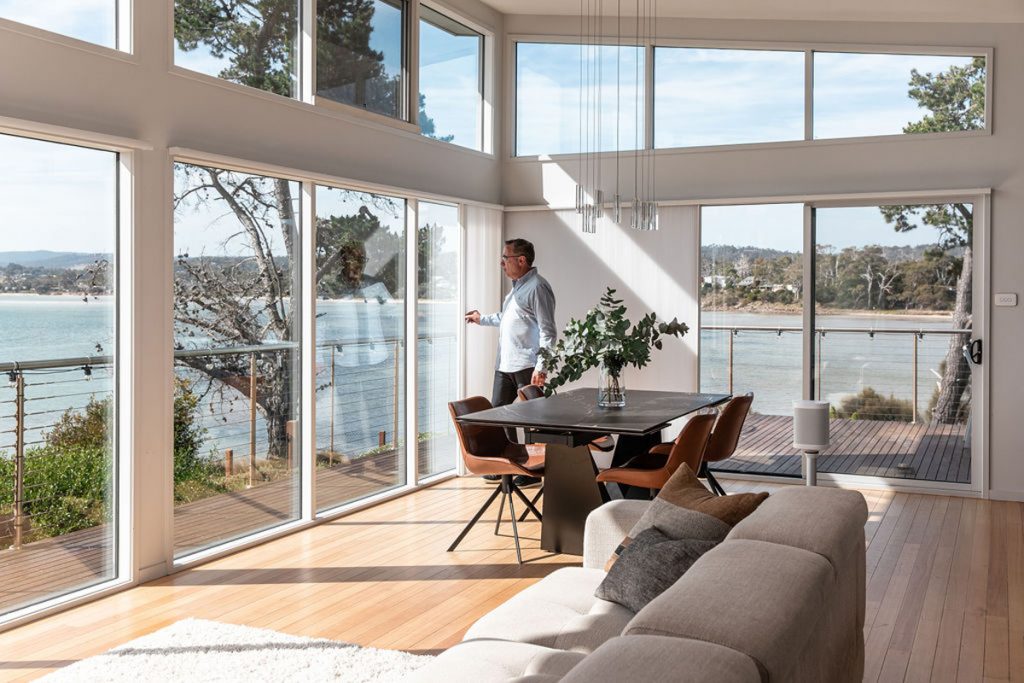
“Help your customers create timeless interiors by seamlessly integrating a variety of styles and periods. Whether they seek contemporary window treatments like shutters or sheer curtains to accentuate vintage décor or prefer a touch of tradition with venetian blinds in a modern setting, Norman provides a diverse array of products, colours, and distinctive design options to cater to every individual style.”
Giorgia says that Straight lines are surrendering to sinuous forms, as furniture, window treatments, and home décor embrace curves.
“SmartDrape’s softly curved individual vanes not only embody this elegant aesthetic but also offer many practical benefits.”
“Windows undergo a transformation with layered styling adding warmth, texture, and style to a space.”
“Norman has a range of options to empower customers with versatility and control over light and privacy from the Blockout Shutters, Day/Night Honeycombs, SmartDrape to PerfectSheer, offering dual fabric choices for enhanced customisation and functionality.”
Giorgia says that motorisation is on ongoing trend in the market with cutting-edge motorised technology such as Norman’s new ShadeAuto Hub and App.
Customisation and personalisation is also a clear advantage, and especially Giorgia says Norman’s comprehensive range that caters to every budget.
“From intricate handles to hand carving and tailored solutions for unique window shapes, we provide attention to even the smallest details.”
“By delivering personalised, distinctive solutions, you guarantee customer satisfaction, elevating their living spaces and fostering long-term loyalty.”
Change in seasons sees change in trends
Michelle Macready, Sales Manager at BM Blinds says that seasonality affects trends in the window furnishings sector.
“As the weather begins to cool down, we notice that the selection of window furnishings that clients purchase also changes,” Macready says.
“During the warmer weather in the six months from September through to February, the focus is on keeping the heat out.”
“We see a surge in awning sales and e-ZIP channel blinds as customers find ways to help keep their homes cool.”
“Even internal furnishings change through these months with a clear focus on blackout and room darkening fabrics. As the weather cools and daylight savings ends, the days get shorter, the focus changes and is on keeping the house warm and cosy.”
Macready says curtains and curtain style products such as Vertical Sheers add warmth to a room and soften the look.
“With the addition of new fabric ranges and the average dollar value of these items decreasing, we have continued to see a rise in their popularity.”
BM Blinds has been manufacturing Vertical Sheers since 2019 offering all four track options in a variety of colours.
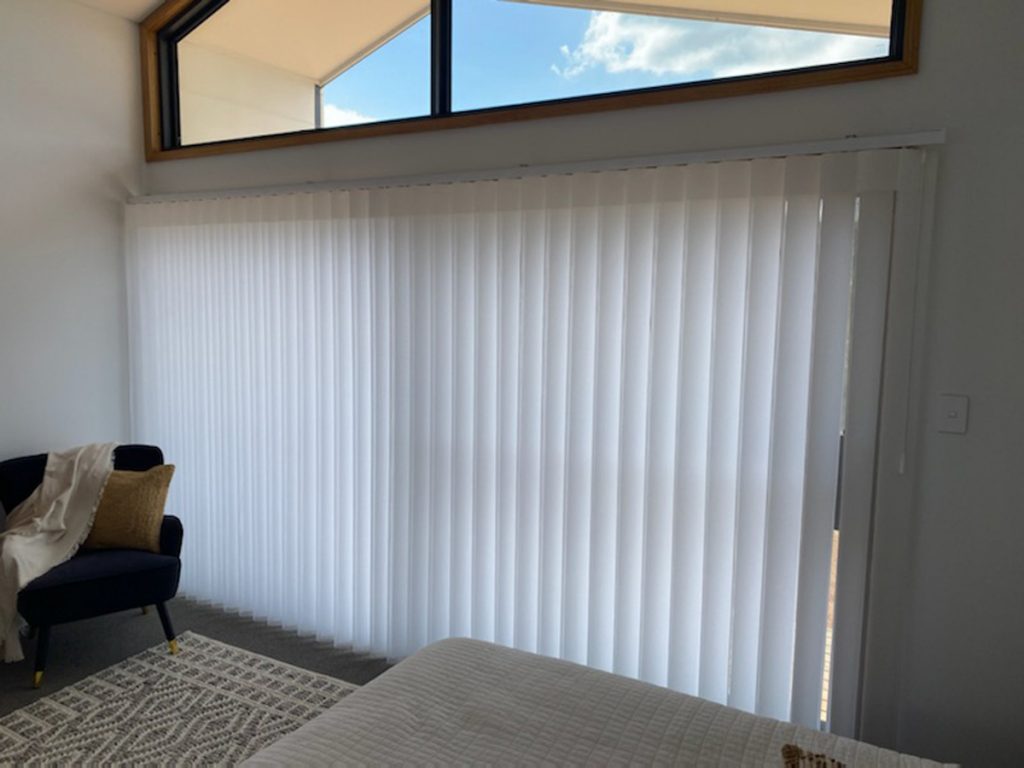
“Although the tracks look like any other track, the difference with the BM Blinds track is hidden inside.”
“Like many quality items, it’s the small details that make them unique. Using stainless steel spacers that are perfectly positioned to give your Vertical Sheer an even look that has the correct amount of fullness. These subtle differences, although not obvious at first glance, ensure years of trouble-free use.”
“Being able to operate your Vertical Sheer with a wand, cord or having it fully automated using a unique belt system ensures the Vertical Sheer not only looks amazing but functions seamlessly.”
Macready says that as fabric offerings have expanded, soft lighter sheers have become increasingly popular.
“The denim blue hues of the Symmetry range that complement the Hampton style interior has also seen a surge.”
“The crisp and clean looking fabrics that let natural light diffuse as it enters the room are a timeless look that is always on trend,” Macready adds.